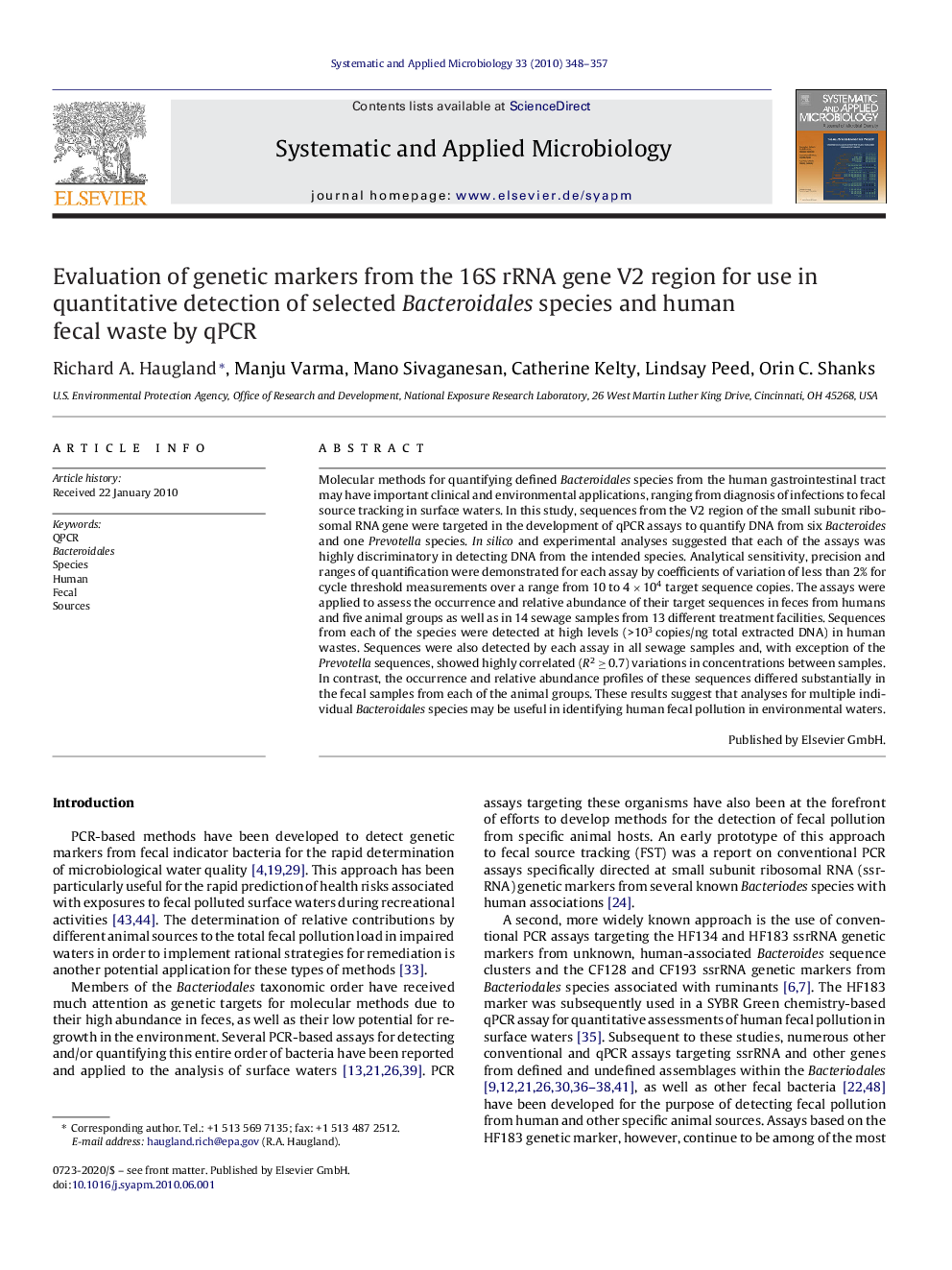| Article ID | Journal | Published Year | Pages | File Type |
|---|---|---|---|---|
| 2063296 | Systematic and Applied Microbiology | 2010 | 10 Pages |
Molecular methods for quantifying defined Bacteroidales species from the human gastrointestinal tract may have important clinical and environmental applications, ranging from diagnosis of infections to fecal source tracking in surface waters. In this study, sequences from the V2 region of the small subunit ribosomal RNA gene were targeted in the development of qPCR assays to quantify DNA from six Bacteroides and one Prevotella species. In silico and experimental analyses suggested that each of the assays was highly discriminatory in detecting DNA from the intended species. Analytical sensitivity, precision and ranges of quantification were demonstrated for each assay by coefficients of variation of less than 2% for cycle threshold measurements over a range from 10 to 4 × 104 target sequence copies. The assays were applied to assess the occurrence and relative abundance of their target sequences in feces from humans and five animal groups as well as in 14 sewage samples from 13 different treatment facilities. Sequences from each of the species were detected at high levels (>103 copies/ng total extracted DNA) in human wastes. Sequences were also detected by each assay in all sewage samples and, with exception of the Prevotella sequences, showed highly correlated (R2 ≥ 0.7) variations in concentrations between samples. In contrast, the occurrence and relative abundance profiles of these sequences differed substantially in the fecal samples from each of the animal groups. These results suggest that analyses for multiple individual Bacteroidales species may be useful in identifying human fecal pollution in environmental waters.
